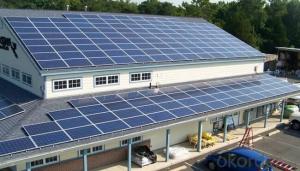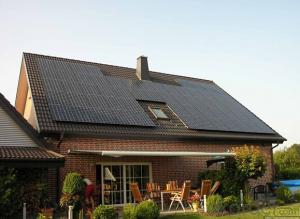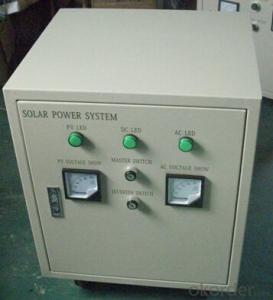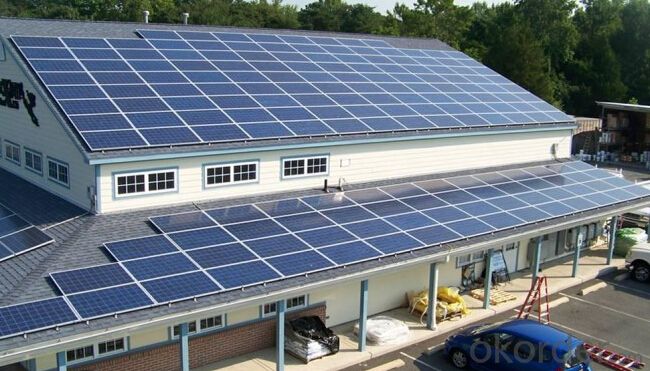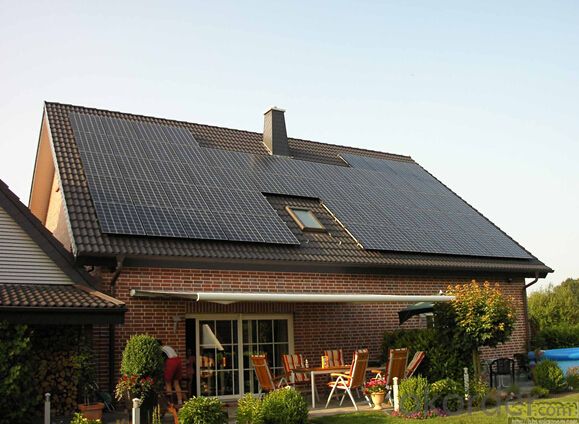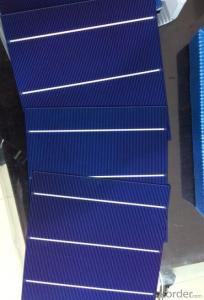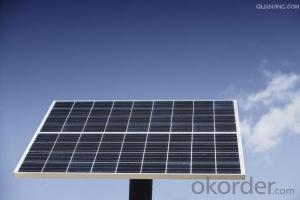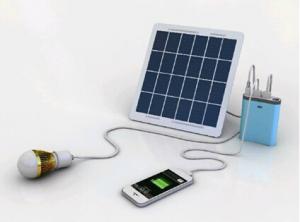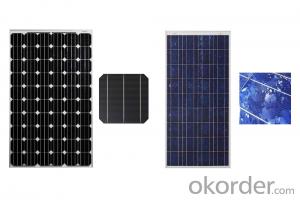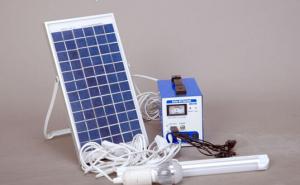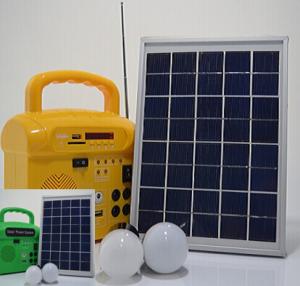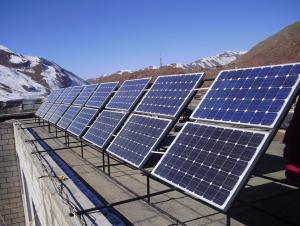CNBM Solar Roof System - 30kW Organic Thin Film Solar Cells - $47,000 Only
- Loading Port:
- Shanghai
- Payment Terms:
- TT OR LC
- Min Order Qty:
- 1 PCS
- Supply Capability:
- 3000 PCS/month
OKorder Service Pledge
OKorder Financial Service
You Might Also Like
Introduction of Solar Roof System
Solar Home System is composed by Solar Panels, Inverters, Charger Controller, Battery, Cable, Mounting Bracket, which is applied to produce electricity for home use.
Solar Home System is quite suitable product in urban area and the place which is short of electricity. Our Small Solar Home System own great benifits compare with other kind electricity resources:
Our company’s main target is to make every family can use cheap solar energy and enjoy the new innovation of modern science and technology.
Working Principle of Solar Home System
The stand alone Solar Home System is an off-grid solar system which uses batteries to store the solar energy. Stand alone solar system solutions design for those who are not able or willing to connect to electricity grid.
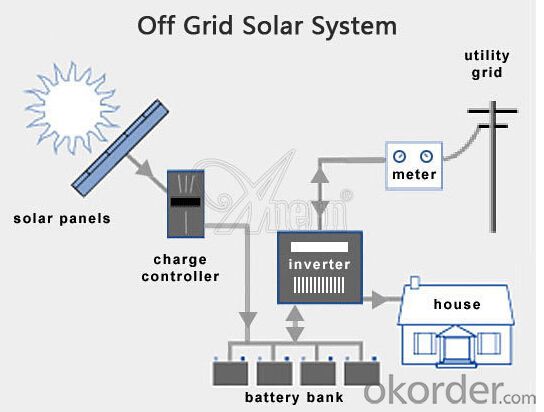
Customer Home Appliance Situation
Customer’s home appliance’s consumption is 76980W Per day. The designed system is on the basis of 2 working days.
| NO. | Name | Model | Quantity | Total Price |
| CIF Lagos/Tema/Takoradi | ||||
| 1 | PV MODULE | 250w Poly, A grade | 128 PCS | $47780/Set (Gel Battery) |
| 2 | Mounting system | 30 KW with connection Wires | 30 KW | |
| 3 | Charge controller | DC48V,60A | 1 PCS | |
| 4 | Battery | 12V,200Ah | 64 PCS | |
| 5 | Sine wave inverter | 30KW/ 384V | 1 PCS | |
| 6 | Cable | - | 700 m | |
| 7 | Others | Combiner Box etc | / |
Product Features of Solar Home System
1. Off grid solar power system is mainly used for application with relatively-small power consumption, and the areas have no grid network coverage, or grid power is unstable or outage condition.
2. It’s composed of solar panels, hybrid solar inverter, battery bank, solar panel mounting racks, and other accessories required fora complete home solar power system.
3. The battery bank gives a stable power output to the solar inverter which converts DC to AC to power loads, and provides power backup in rainy or cloudy days.
4. The solar panels generate electricity at daytime and charge the battery bank.
5. The off grid home solar power system provides grid power bypass in case of battery power shortage when sunshine is not enough.
6. All the off grid home solar power system configurations are worked out by scientific calculation and design.
Advantage of Our Solar Home System
1 Excellent Performance: Our Solar Home System is composed by Brand Standard Kits with high quality. Our solar system has the advantage of high efficiency and stable operation. We can ensure our product with a long life period.
2. Small Orders Accepted: We can accept small orders as our customer’s trial order.
3. Warehouse: We have warehouse overseas which can bring great convenience to our customer to pick up the products.
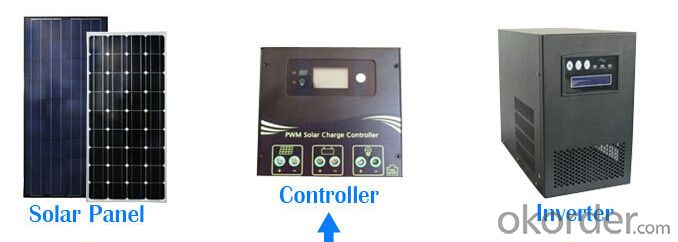


Terms and Conditions
1. Trade terms: FOB Shanghai
2. Payment terms: 30% T/T, balanced before shipment/ LC at sight before shipment. Actual Terms can be negotiated for big order.
3. Package: Exported standard package suitable for tough handling and sea transport.
4. Delivery: Goods to be ready within 10~30 days depending on order quantity.
5. Warranty: 10 years for solar panel, 2 years for controller/inverter/battery.
FAQ
Q: Could you introduce the background of your company?
A: We are a Group corp. with 1GW capacity in China, which is Okorder’s registered VIP Supplier, possess Financial Service from Okorder.com.
Q: Required mainly certificates (CE&IEC/TUV/RoHS)?
A: Our products are certificated by CE RoHS, IEC, ISO, TUV, UL etc.
Q: Your main exported market is?
A: Main markets of our products is: South-east Asia, Mid-east, Arica, East Europe and Latin America.
- Q: Can solar cells be used for powering universities?
- Yes, solar cells can definitely be used for powering universities. Solar energy is a reliable and sustainable source of power that can be harnessed through solar cells or panels. By installing solar panels on university buildings or campuses, universities can generate clean electricity, reduce their carbon footprint, and potentially save on energy costs in the long run.
- Q: Can solar cells be used in mountainous regions?
- Yes, solar cells can be used in mountainous regions. In fact, mountainous regions can often be advantageous for solar energy generation due to the higher altitude and reduced air pollution, which can result in increased solar radiation. However, the installation of solar panels may require careful consideration of factors such as slope, orientation, and potential shading from surrounding mountains or trees.
- Q: Can solar cells be used to power satellites?
- Yes, solar cells can be used to power satellites. In fact, solar cells are the primary source of power for most satellites orbiting the Earth. They convert sunlight directly into electricity, providing a reliable and renewable energy source for the electrical systems on board the satellite.
- Q: What is the impact of solar cells on reducing noise pollution from power generation?
- Solar cells have a minimal impact on reducing noise pollution from power generation since they operate silently, unlike traditional power plants that emit noise during operation.
- Q: Can solar cells be used to power remote weather stations?
- Yes, solar cells can be used to power remote weather stations. Solar cells convert sunlight into electricity, providing a reliable and sustainable power source for remote locations. This eliminates the need for traditional power grid connections and reduces operating costs. Additionally, solar cells can be easily installed and maintained in remote areas, making them an ideal solution for powering weather stations in such locations.
- Q: Can solar cells be used for powering remote weather stations?
- Yes, solar cells can be used to power remote weather stations. Solar cells convert sunlight into electricity, which can be used to power various devices, including weather stations. This makes them an ideal and sustainable solution for providing power to remote locations where traditional grid connectivity may not be available.
- Q: What is the impact of partial shading on solar cell performance?
- Partial shading on solar cell performance can have a significant negative impact. When a solar cell is partially shaded, even a small portion of shading can reduce its overall power output. This is because shaded cells create voltage mismatches within the solar panel, leading to decreased current flow and overall efficiency. Additionally, partial shading can also cause hotspots, which can damage the solar cells and reduce their lifespan. Therefore, it is crucial to design solar systems carefully, avoiding any shading to ensure optimal performance and maximize energy generation.
- Q: Can solar cells work in cloudy weather?
- Yes, solar cells can still work in cloudy weather, although their efficiency may be reduced. Clouds diffuse sunlight, causing a decrease in the amount of direct sunlight reaching the solar cells. However, solar cells can still generate electricity from the diffused sunlight, although at a lower rate compared to sunny conditions.
- Q: Can solar cells be integrated into electric vehicle charging stations?
- Yes, solar cells can definitely be integrated into electric vehicle charging stations. By harnessing solar energy, these charging stations can provide an environmentally-friendly and sustainable source of power for electric vehicles, reducing their carbon footprint and reliance on fossil fuels.
- Q: Can solar cells be used for powering remote data collection devices?
- Yes, solar cells can be used for powering remote data collection devices. Solar cells harness sunlight and convert it into electricity, providing a reliable and sustainable source of power for devices located in remote areas where access to traditional power sources may be limited or unavailable.
Send your message to us
CNBM Solar Roof System - 30kW Organic Thin Film Solar Cells - $47,000 Only
- Loading Port:
- Shanghai
- Payment Terms:
- TT OR LC
- Min Order Qty:
- 1 PCS
- Supply Capability:
- 3000 PCS/month
OKorder Service Pledge
OKorder Financial Service
Similar products
Hot products
Hot Searches
Related keywords
